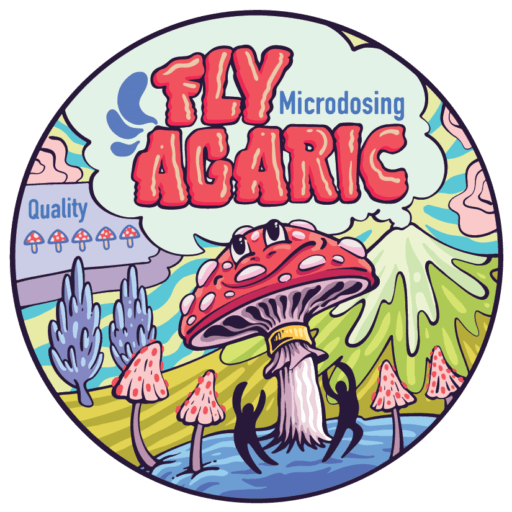In the world of mushrooms, few specimens captivate the imagination like Amanita muscaria. Known for its iconic red cap speckled with white dots, this mushroom is steeped in mythology and folklore, often associated with magical and mystical properties. Yet, beneath its striking appearance lies a complex narrative of myths and truths. Delving into the fascinating history and science of Amanita muscaria, this article aims to separate fact from fiction, providing a balanced perspective on one of nature’s most enigmatic fungi.
Myth: Amanita Muscaria was only used by shamans in Siberia.
Truth: While Siberian shamans are well-known for using Fly Agaric, the mushroom was also used in other cultures. For example, there are theories that the ancient Greeks and Norse people might have used Amanita Muscaria in religious rituals. The mushroom’s distinctive appearance made it a subject of various myths and legends across different cultures.
Myth: Fly Agaric was the original Soma of ancient Indian texts.
Truth: Some scholars hypothesize that Amanita Muscaria was the Soma mentioned in the Rigveda, an ancient Indian collection of hymns. However, this theory remains controversial, and other candidates, like the ephedra plant, have also been proposed. There is no definitive evidence to conclusively identify Soma.
Myth: Fly Agaric was always considered poisonous and avoided.
Truth: While recognized for its toxicity, Amanita Muscaria was not universally shunned. Some cultures developed methods to safely prepare and consume it, recognizing its psychoactive properties. For instance, Siberian tribes leached out toxins through drying and then consumed it for spiritual and healing purposes.
Myth: Amanita Muscaria microdosing is a recent trend.
Truth: The practice of using small doses of Fly Agaric has historical precedents. Indigenous peoples and shamans have long used controlled amounts of Amanita Muscaria for ritualistic and medicinal purposes, predating the modern trend of microdosing.
Myth: Fly Agaric has no nutritional value.
Truth: Amanita Muscaria, like many mushrooms, contains various nutrients such as proteins, vitamins, and minerals. However, due to its psychoactive and toxic properties, it’s not commonly consumed for nutrition.
Myth: Amanita Muscaria is universally illegal.
Truth: The legal status of Amanita Muscaria varies by country and region. In some places, it is legal to possess and use, while in others, it may be regulated or prohibited. It’s essential to check local laws before obtaining or using Fly Agaric mushrooms.
Myth: Dry Amanita Muscaria is less effective than fresh.
Truth: Drying Amanita Muscaria can make it more effective by converting ibotenic acid into muscimol, which is more potent and less toxic. Dry caps are often used in Amanita Muscaria microdosing for this reason.
Myth: Consuming Fly Agaric leads to guaranteed visions.
Truth: While some users report visionary experiences, not everyone who consumes Amanita Muscaria will have visions. The effects vary widely based on dosage, individual physiology, and preparation methods.
Myth: Fly Agaric’s effects are the same for everyone.
Truth: The effects of Amanita Muscaria can vary widely among individuals due to differences in body chemistry, dosage, and preparation methods. Some people may experience mild euphoria and relaxation, while others might encounter more intense psychoactive effects.
Myth: Amanita Muscaria is highly addictive.
Truth: There is no substantial evidence to suggest that Fly Agaric is addictive. While any substance that alters mood or perception has the potential for misuse, the risk of addiction to Amanita Muscaria appears to be low compared to many other psychoactive substances.
Myth: Fly Agaric is the same as Amanita phalloides (death cap).
Truth: Amanita Muscaria and Amanita phalloides are different species with distinct chemical compositions. While Fly Agaric contains psychoactive compounds like muscimol and ibotenic acid, Amanita phalloides is highly toxic and often fatal if ingested. Confusing the two can be extremely dangerous.
Myth: Fly Agaric’s effects are purely negative.
Truth: While Amanita Muscaria can cause unpleasant side effects if misused, it also has potential positive effects, such as pain relief, stress reduction, and improved mood. Proper dosing and preparation can help mitigate negative effects and enhance positive outcomes.
Myth: There is no scientific interest in Amanita Muscaria.
Truth: Scientific interest in Fly Agaric has been growing, particularly in understanding its psychoactive compounds, muscimol, and ibotenic acid. Researchers are exploring its potential therapeutic applications and seeking to understand its pharmacological effects better.
In conclusion, understanding the myths and truths about Amanita Muscaria is essential for appreciating its cultural significance and potential uses. While myths have painted it as dangerous and mysterious, modern research and traditional knowledge reveal a more nuanced picture. By demystifying Amanita Muscaria, we open the door to informed and respectful exploration of this unique fungus. For those intrigued and ready to explore further, visit Amanita Fly, where you can find high-quality Amanita Muscaria products and embark on your journey with confidence.

